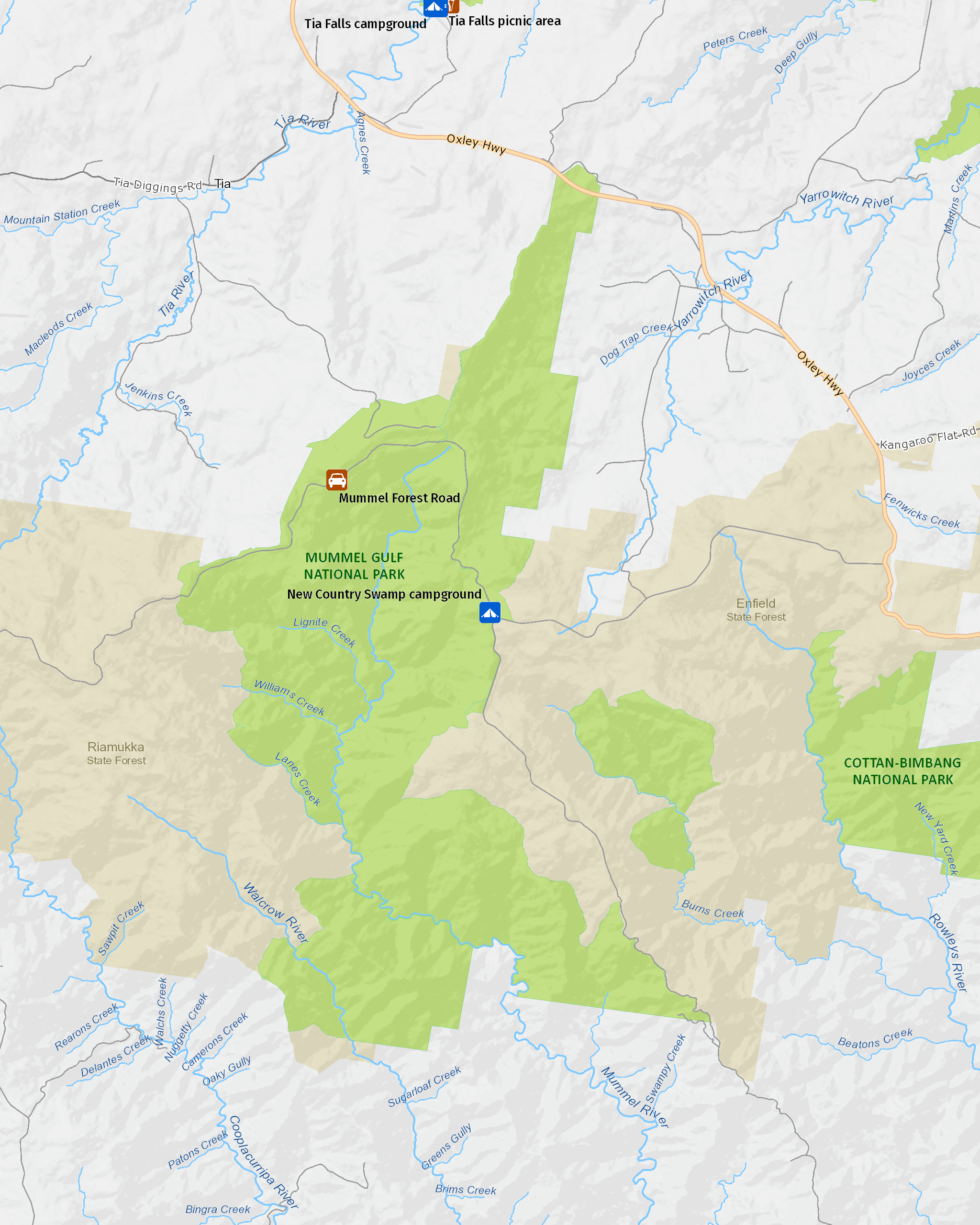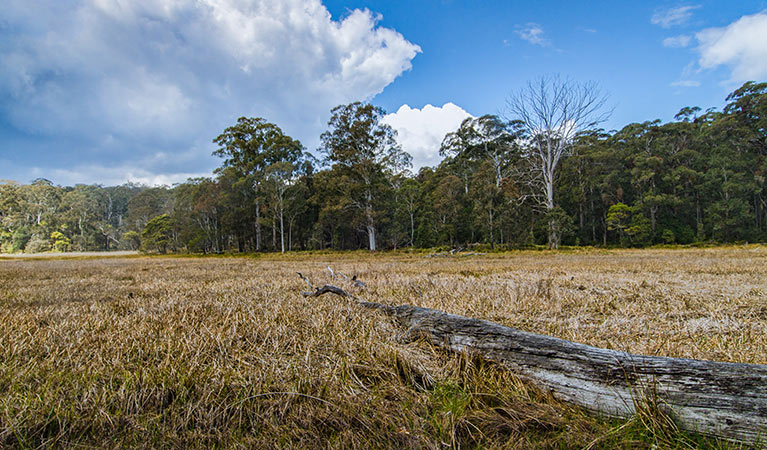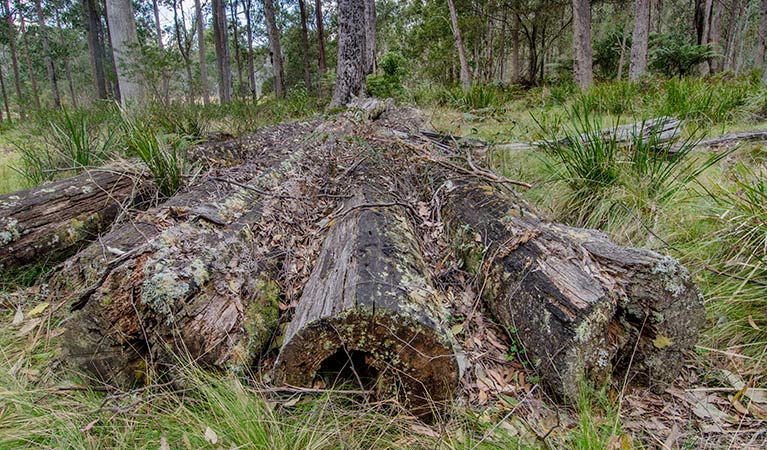New Country Swamp campground
Mummel Gulf National Park
Overview
New Country Swamp campground is a basic site within walking distance of rugged Mummel Gulf, offering picnic facilities, wood barbecues, scenic views, and birdwatching.
| Number of campsites | 5 |
|---|---|
| Camping type | Tent, Camper trailer site, Camping beside my vehicle |
| Facilities | Picnic tables, barbecue facilities, toilets |
| What to bring | Drinking water, cooking water |
| Price | There are no camping fees at this campground but a $6 booking fee applies. |
| Group bookings | Book up to 20 people or 5 sites online. For larger groups, make a group booking enquiry. |
| Please note |
|
Set up camp in New Country Swamp campground, and it’s likely you’ll have much of the place to yourself. Surrounded by towering eucalyptus trees, native scrub, and the seasonal swamp, this basic site offers seclusion and privacy. There are just enough amenities to make relaxation as easy as rolling out the tent.
Perfect for self-reliant campers, it’s just a 5-minute walk to a scenic lookout on the edge of Mummel Gulf. On a clear day Barrington Tops can be seen in the distance. The Snow Gum Walk (650m) takes you through old-growth eucalypt forest into an open woodland of Snow Gums behind the swamp, a great spot for photography. The journey here is part of the attraction too. If you’re 4WD touring, approach via Panhandle fire trail for breathtaking views across Tia Valley.
An afternoon by New Country Swamp is perfect for birdwatching, with fan-tailed cuckoos, pardolotes, and yellow robins hanging around in spring and summer. The kids will love the wallabies and wombats. At night, as you sit around the campfire, boobooks and sooty owls provide a nocturnal chorus for your campfire songs.
Map

Map legend

Local alerts
For the latest updates on fires, closures and other alerts in this area, see https://uat.nswparks.cloud/camping-and-accommodation/campgrounds/new-country-swamp-campground/local-alerts
Bookings
- National Parks Contact Centre
- 7am to 7pm daily
- 1300 072 757 (13000 PARKS) for the cost of a local call within Australia excluding mobiles
- parks.info@environment.nsw.gov.au
Operated by
- Walcha office
- Monday to Friday, 8.30am to 4.30pm.
- 02 6777 4700
- npws.nea@environment.nsw.gov.au
- 188W North Street, Walcha NSW 2354
Park info
- in Mummel Gulf National Park in the Country NSW region
Mummel Gulf National Park is always open but may have to close at times due to poor weather or fire danger.
Visitor info
All the practical information you need to know about New Country Swamp campground.
Maps and downloads
Learn more
New Country Swamp campground is in Mummel Gulf National Park. Here are just some of the reasons why this park is special:
Forests worth protecting

What were the anti-logging protesters trying to protect? Mummel Gulf National Park is notable for its wide variety of plant life, not to mention the animals which rely on the biodiversity. Your visit will expose you to everything from sclerophyll forests to warm temperate rainforests, and, if you're lucky, ant orchids and greenhoods - both threatened species.
- Mummel Forest Road Mummel Forest Road is a scenic car touring route between Wauchope and Walcha that offers forest views and opportunities for cycling, picnics and bushwalking.
The journey of John Oxley, the legacy of logging

The famous explorer John Oxley would have travelled in the vicinity of Mummel Gulf National Park on his crossing from Apsley Falls to the coast in 1818. Later, though little evidence remains, small-scale mining and grazing took place in the area. More notable are the logging trails - logging here ultimately caused a series of protests in the 1990s, which resulted in the creation of many national parks in the north-east of NSW.
The lost Aboriginal connection

The difficult terrain in Mummel Gulf National Park poses a challenge to more than just adventurous hikers. There are very few recorded Aboriginal sites in the area because of the complexities of surveying. This doesn't mean they don't exist, though: Aboriginal people may have moved through the area as they crossed between the tablelands and the coast. They may also have lived in the area permanently, drawing on the land and water biodiversity to inform their spiritual beliefs and cultural identity.

